Equine Biomechanics: Horse Gaits
By: Nestor Imberti Posted: 02/06/2023
Equine locomotion is the study of the horse’s movement, physics and style. Over the centuries, horses were selected for speed, athletic ability and comfort.
In this second article on equine biomechanics, we will go into detail about the different gaits of a horse.
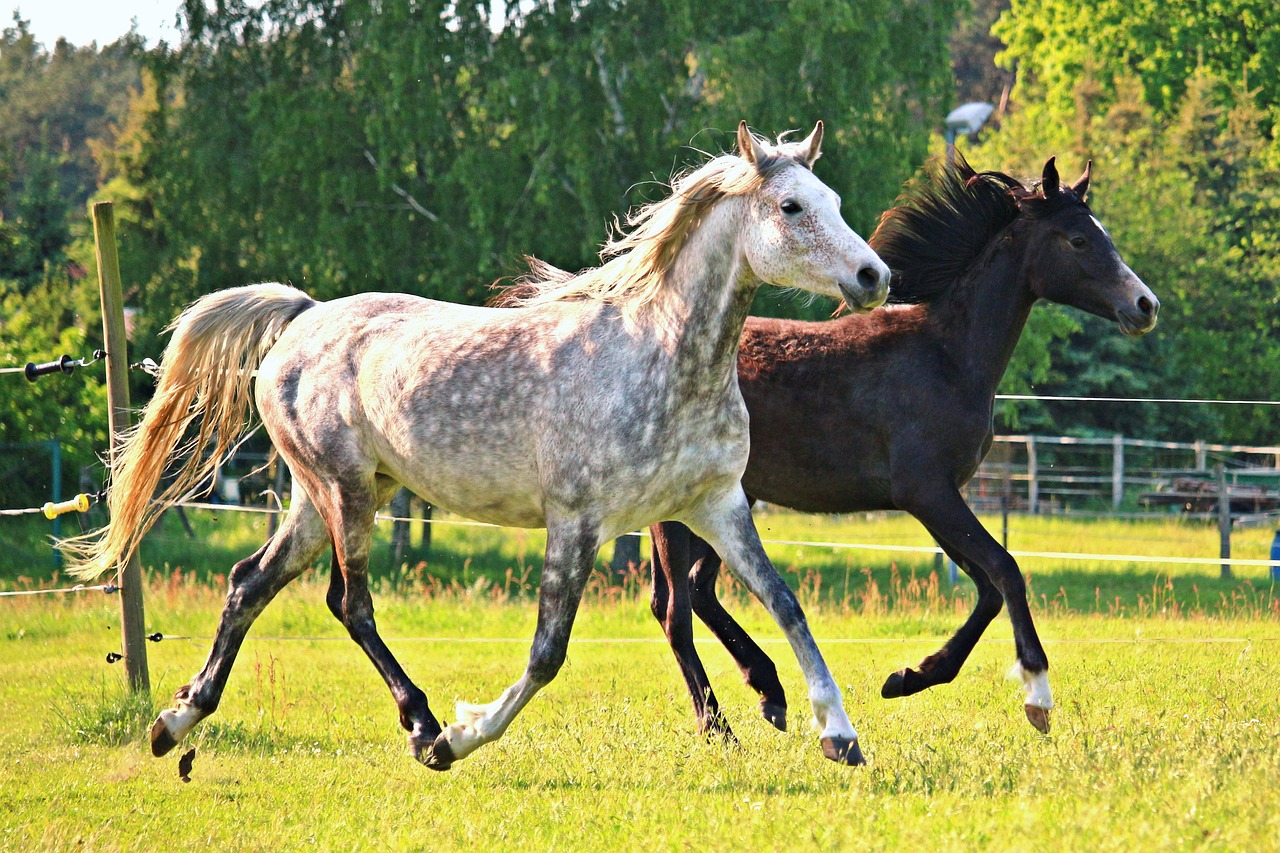
Horse Gaits
Horse gaits refer to the locomotion achieved through the movement of an animal's legs. A gait can be defined as a complex and strictly coordinated rhythmic and automatic movement of the limbs, and its length depends on the length of the animal’s body.
There are different ways to classify the different movements of a horse.
Horses usually have 3 natural gaits: walk, trot and gallop.
However, certain breeds can perform extra gaits, derived from natural gaits. Thus, for example, Peruvian Pasos can perform a gait called “paso llano”, which creates a smooth ride.
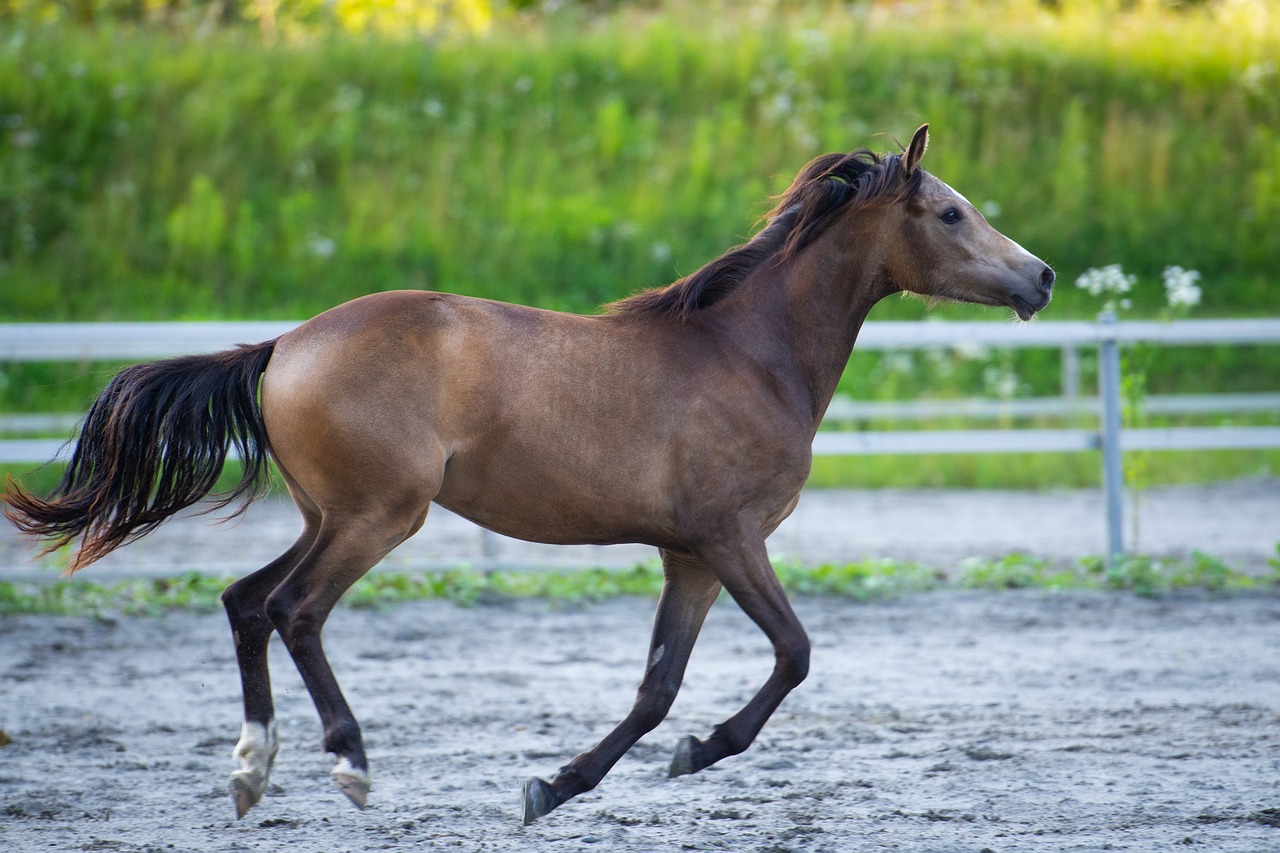
The first thing to take into consideration when talking about the different gaits of horse is the suspension or swing phase during movement.
The swing phase is the period of time when the legs are off the ground.
While in the walk there is always one foot on the ground, in the trot and gallop there is a moment when all four hooves are off the ground.
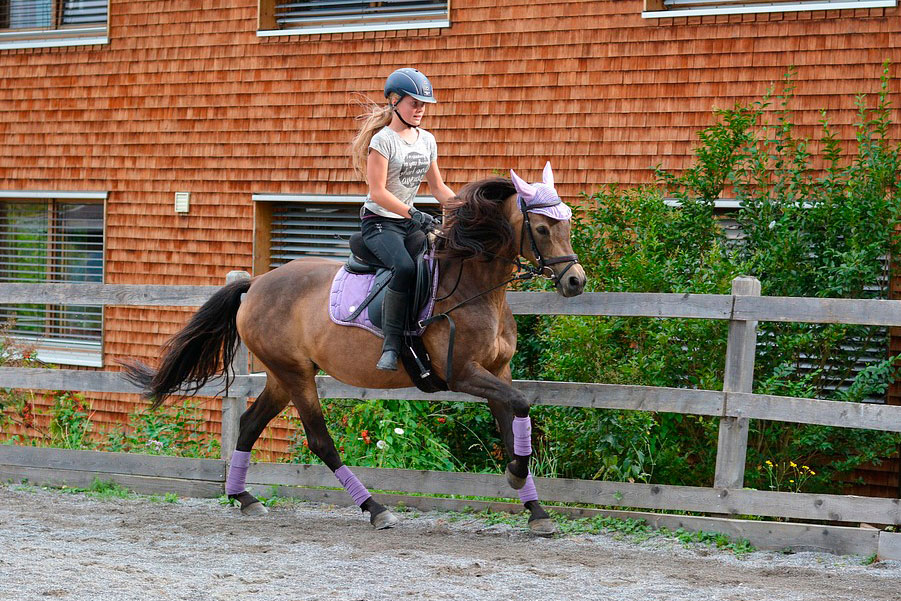
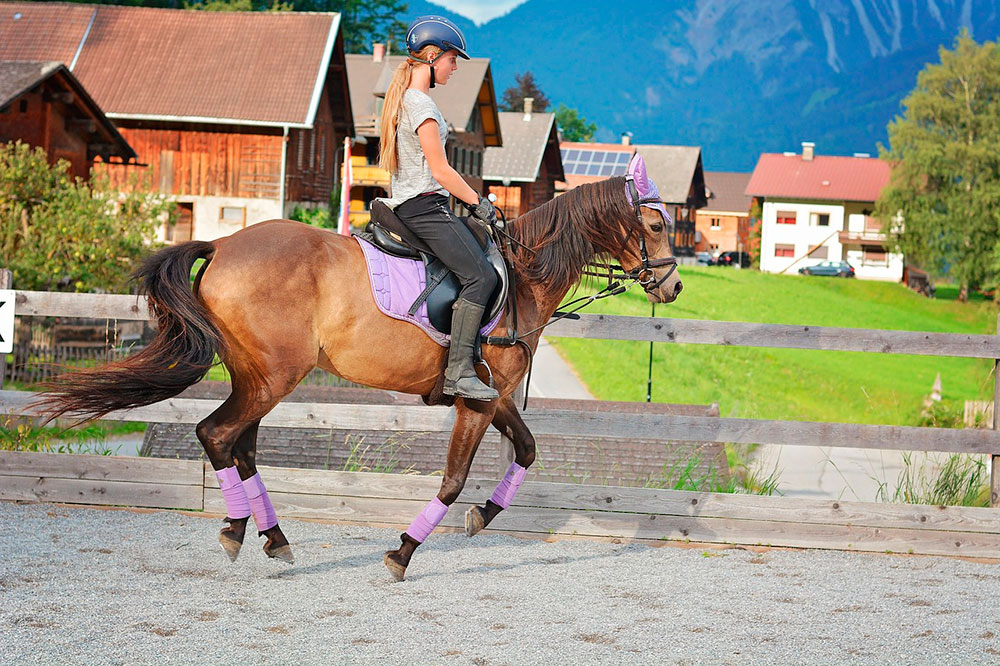
Gaits can be classified according to their symmetry.
The walk and the trot are symmetrical gaits because footfall timings are equal between left and right hind limbs and forelimbs.
On the other hand, asymmetrical gaits such as the canter and the gallop have the footfalls of a pair of feet unevenly spaced in time.
However, the most popular way to classify the gaits is according to the number of beats or footfalls that can be heard during each stride.
The walk is a 4-beat gait; the trot is a 2-beat gait and the canter consists of 3 beats.
We must bear in mind that horses move naturally through a range of speeds by transitioning between different gaits when it is energetically beneficial. Transitions should be as balanced and smooth as possible.
Next, we will take a close look at the three natural gaits of a horse.
Would you like to be part of a group with an equestrian soul?
Join the Ampascachi Community. Obtain exclusive benefits for your holidays.
We tell you how to start, train and take care of your horse.
Interviews with direct providers of riding tours around the world.
Opinions of outstanding equine scientists and personalities in the equestrian sport world.
The Walk
The walk is a natural, symmetrical and 4-beat gait (transverse or crossed).
The footfall sequence would be as follows:
- The horse lifts the Left Hind (LH)
- The horse lands on the LH and lifts the Left Front (LF)
- The horse lands on the LF followed by the Right Hind (RH)
- The horse lands on the RH and ends by lifting the Right Front (RF)

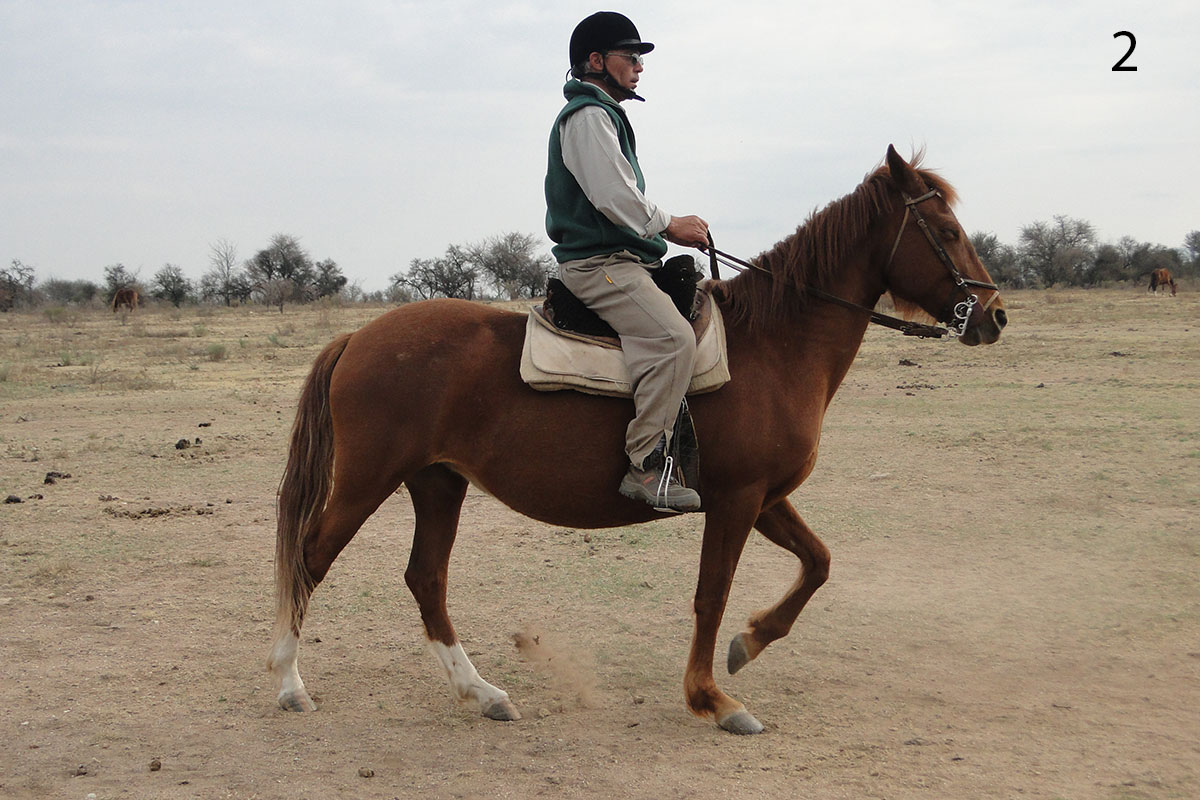
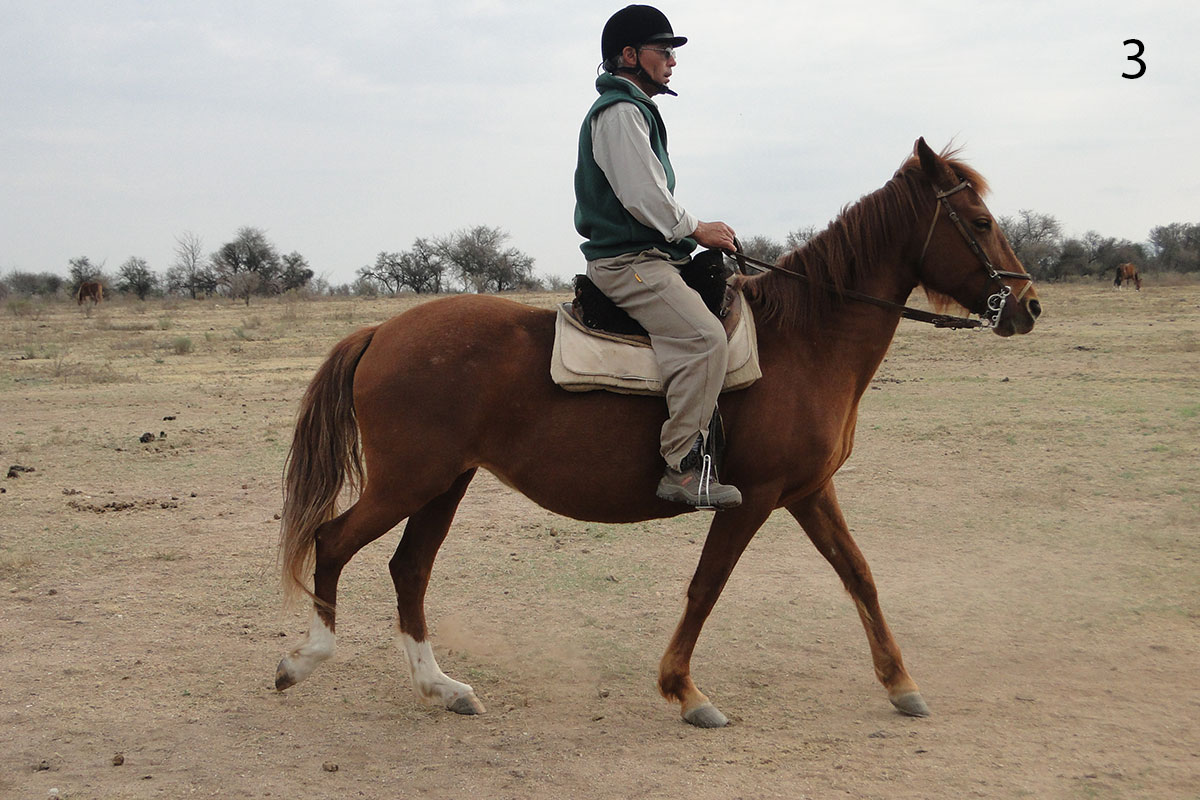
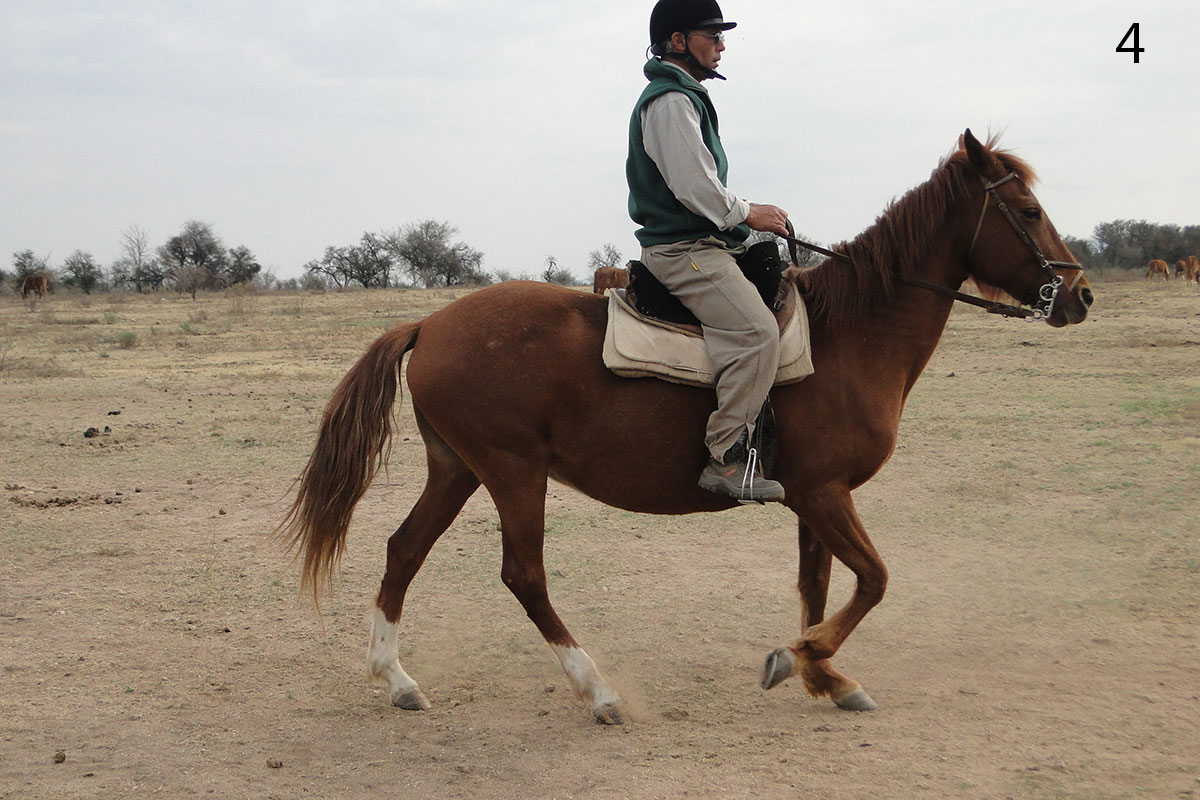
When the horse lifts one leg, the other three feet are touching the ground. This is sequential and always with one leg at a time. That is why this is a 4 beat gait, because each individual footfall within a stride corresponds to a beat.
A horse at the walk averages about 6 kilometres per hour.
Each foot hits the ground about 50 to 60 times per minute and the horse moves its head and neck in a slight up and down motion that helps maintain balance.
This swinging of the neck must be synchronized with the reins and the rider must ensure that the movement of the neck causes no interference, always keeping good contact with the horse's mouth.
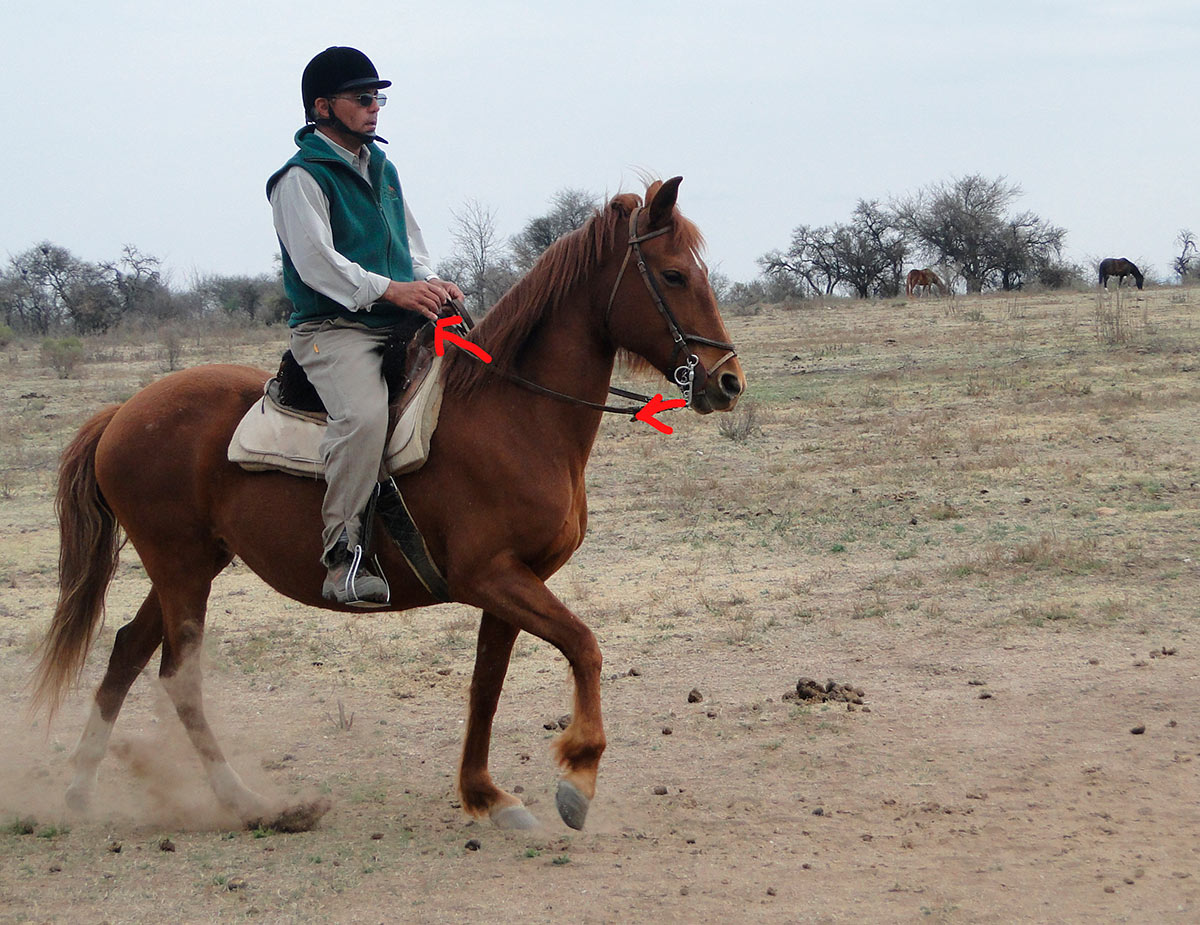

In order to achieve good contact, the pressure in the reins should not cause the horse to react and escape. Too much pressure bothers the horse and we would lose contact. To avoid contact, the horse will toss his head instead of balancing the neck, stick out his tongue or try to slow down.
If there is too much pressure from the bit, the horse may confuse that with the slow-down cue, which would make him react with a series of responses to escape the pressure, and lose impulsion in the hind legs and flexibility. In certain sports such as dressage, this can mean disqualification.
In dressage, the horse may be asked to force the walk, where the horse’s hind hooves touch the ground in front of the hoof prints of his forelegs.
This option is very interesting but can only be performed if the horse’s back is very relaxed and always on the competition arena. If we do it on a trail ride, the bends of the joints will be altered quite differently, which is more demanding than the horse’s natural movement.
The safest way to protect these joints is when the horse’s hind hooves match the hoof prints of his forelegs.
In the case of some horse breeds with special bone conformation, such as the Peruvian Paso, the hind hooves can touch the ground in front of the front hoof prints without straining the joints.
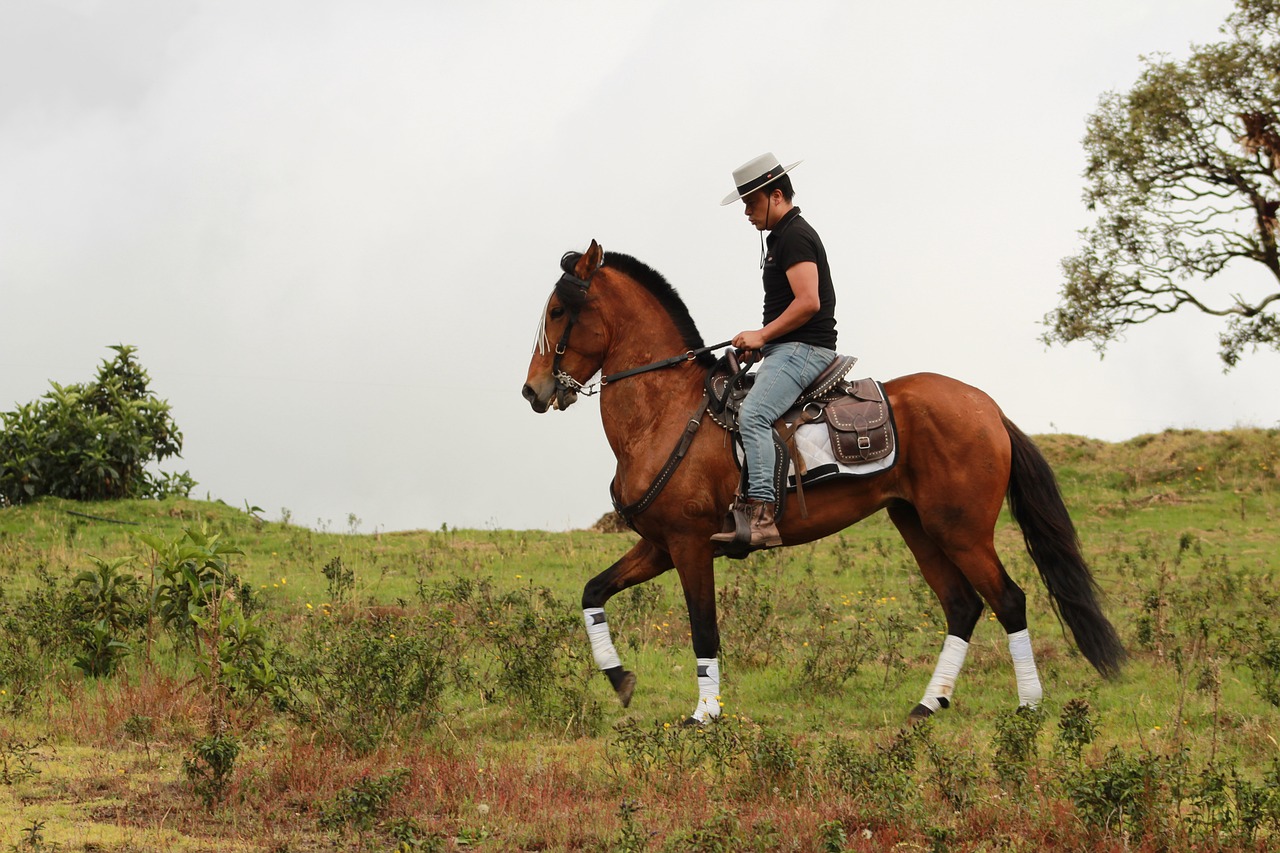
The Trot
The trot is a rapid, symmetrical, two-beat diagonal gait.
In this gait, the diagonal pairs of legs move forward at the same time with a moment of suspension between each beat.
Between the stance phase of each diagonal pair there is a suspension period and this is the footfall sequence:
- Stance phase of Right Hind (RH) + Left Front (LF)
- Stance phase produced by Left Hind (LH) + Right Front (RF)
Between the first and second stance phases there is a moment of suspension, that is, the horse is in the air.
At the trot, the average speed produces between 70 and 80 beats per minute and during movement there is no stretching or shortening of the neck.
The average speed at this gait is approximately 15 kilometres per hour, although some Trotters can go up to 45 kilometres per hour in a race.
However, the minimum speed is zero (the horse does not move forward) in the case of the "Piaffe" (trot in place).
The Canter
The canter is a controlled three-beat gait. It is faster than the trot and does look a bit like a gallop, however it is significantly slower.
In this gait one pair of feet strike the ground simultaneously and the other two feet land independently.
It has one suspension phase in each stride, and it follows lift off of the leading fore limb.
Starting with the right leg as the lead, the footfall sequence would be as follows:
- Stance Phase of Left Hind (LH)
- Stance Phase of Right Hind (RH) + Left Front (LF)
- Ends with Right Front (RF)
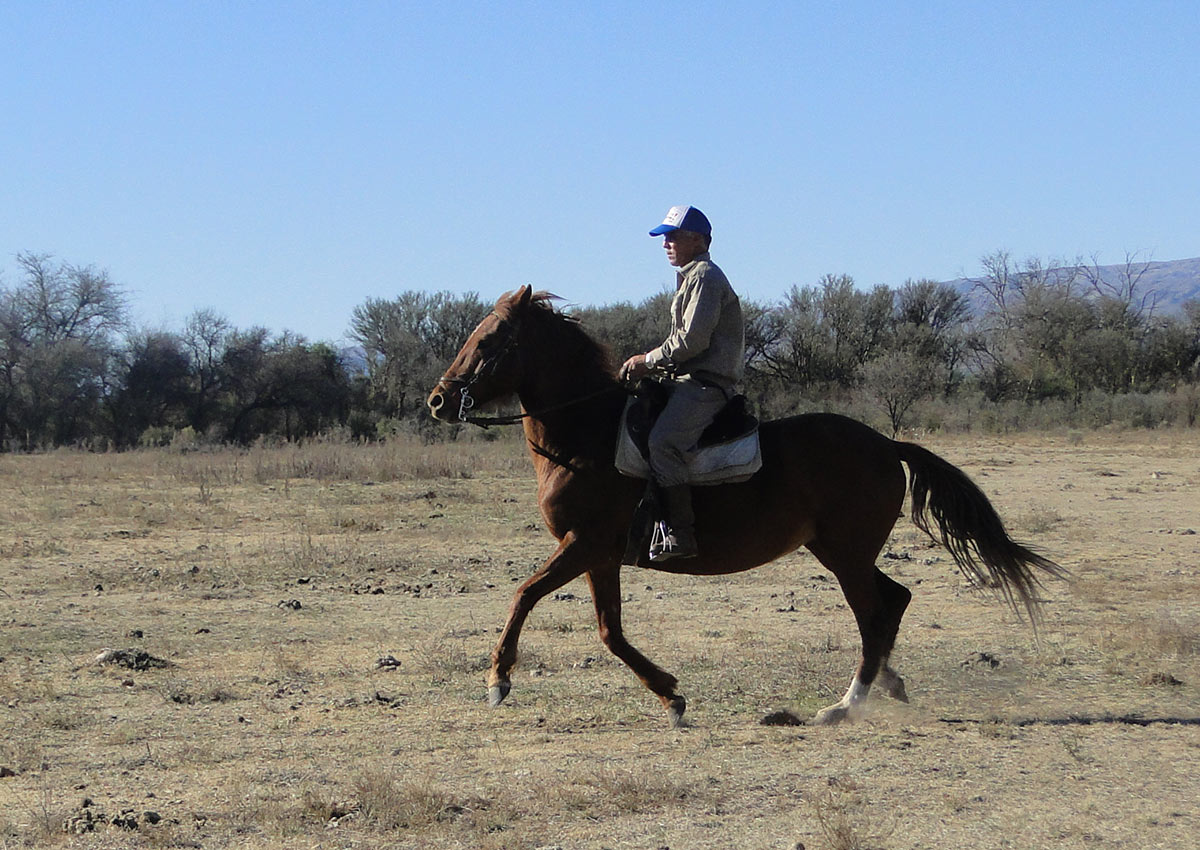
This means that the canter is a non-symmetrical movement because in all three beats a hind leg is followed by the diagonal pair of limbs (hind and front) moving synchronously and finally the leading forelimb, followed by a moment of suspension.
The speed of the limbs, both individual and diagonal, can reach values of 110 stance beats per minute.
In the wild, when horses naturally turn at a canter or a gallop, they preferably use the inside front leg to lead the movement. If they used the outside front leg, it would be more difficult for them to turn.
The Gallop
The gallop is very much like the canter, except that it is faster, more ground-covering, and the three-beat canter changes to a four-beat gait.
In terms of how the legs move, the gallop is very similar to the canter, except that the opposite pair of legs do not hit the ground together.
This allows the horse to take longer strides and gives a much more ‘stretched-out appearance. The frequency of the gallop is not increased in a linear way.
The footfall sequence in the gallop is generally transverse:
- Right Hind (RH)
- Quickly followed by Left Hind (LH)
- Right Front (RF)
- Finishing with Left Front (LF)
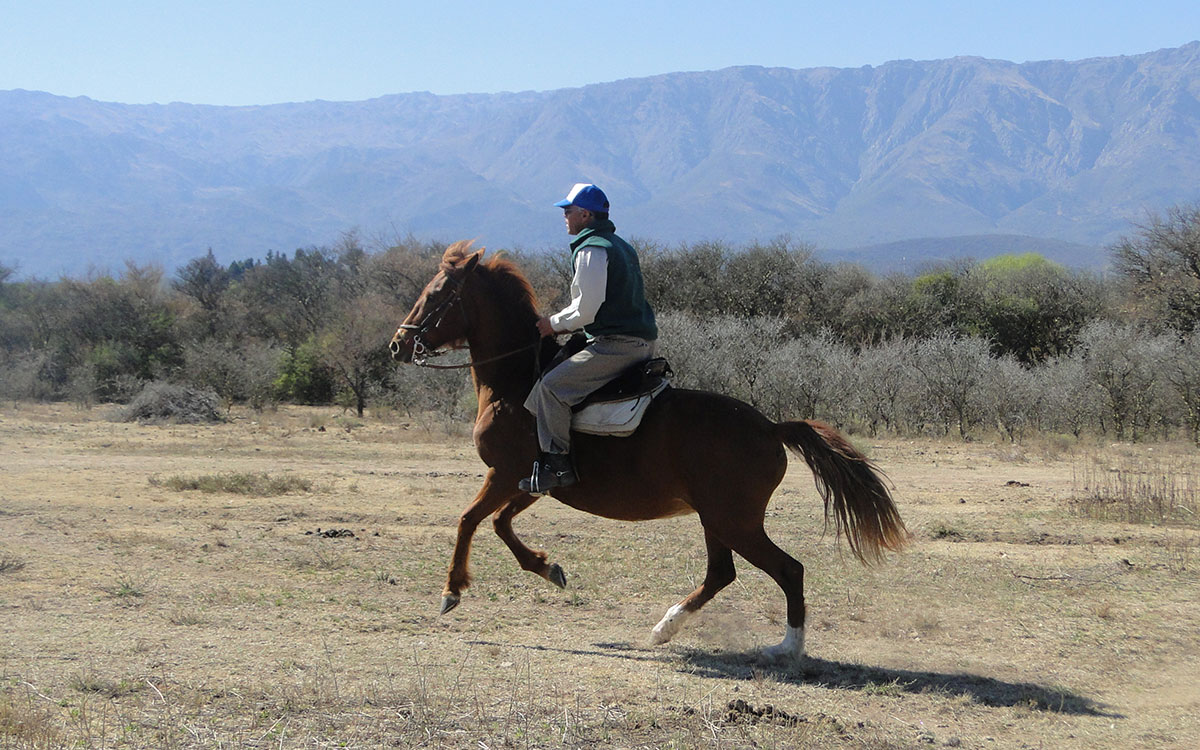
In the gallop, the horse moves its head up and down to help maintain his balance.
We say that the horse is performing a "correct" gallop when, to turn right, the horse gallops on the left front leg, that is, the right front is the lead.
We say that the horse is performing a “counter” canter or gallop when, to turn right, the horse gallops on the right front, that is, the left front is the lead.
The average speed of a galloping horse is about 40 to 48 kilometres per hour. A well-conditioned horse can easily maintain that speed for 30 - 40 minutes. However, the average racehorses speed is approximately 66 kilometres per hour.
Subscribe to the Ampascachi Community and obtain benefits and exclusive content. Furthermore, we offer free advice on horses and equestrian tourism.
Other Gaits
As we discussed at the beginning of this article, in addition to the basic gaits, there are other more specific gaits.
Some horse breeds display special gaits, such as the ambling gaits of the Colombian Paso Fino, the Tennessee Walking Horse, the Icelandic Horse, etc.
Ambling gaits in Gaited Horses
These gaits are limited to certain horse breeds.
Instead of moving the front and hind legs diagonally, in this 2-beat gait, the horse moves the front and hind legs on the same side simultaneously.
That is, when the horse lifts a pair of limbs on the same side, the other pair supports the body.
Ambling gaits are typical of Peruvian horses.
Peruvian Pasos perform an ambling four-beat gait between the walk and the canter and can travel at 14 km / hour without leaving this gait, and they can make the direct transition from walk to canter skipping the trot altogether.

Gaits of the Icelandic Horse
The Icelandic horse is the only breed that has 5 gaits. Every horse in the world has walk, trot, and canter gaits. Icelandic horses can add two more - the tölt and the flying pace.
The Tölt is a four-beat gait and some horses are able to reach up to 25 km/h.
And then there's the “fifth gait” - a flying pace called Skeid or Flugskeið. This flying pace is a lateral gait with a moment of suspension between footfalls; each side has both feet land almost simultaneously.
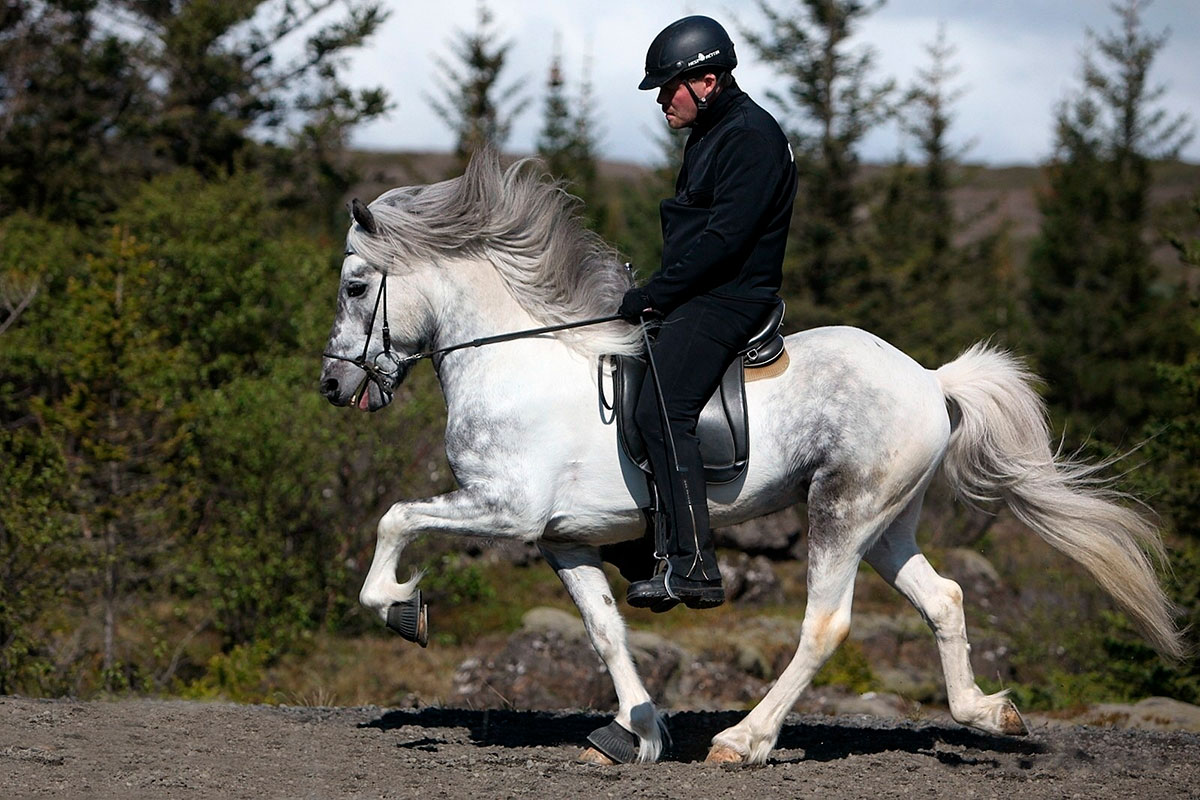
Gaits of the Paso Fino Horse
The Paso Fino is a naturally gaited light horse breed. These horses are prized for their smooth, natural, four-beat, lateral ambling gait.
The Classic Fino or Paso Fino is a collected 4-beat gait with rapid footfalls that covers as little ground as possible.
The Paso Corto is slightly more extended, and used during trail rides. The speed of this gait is comparable to the speed of a trot but is much smoother.
The Paso Largo is a fast, lateral, four-beat gait in which the horse can reach speeds equivalent to a canter or slow gallop.
Gaits of the Tennessee Walking Horse
The Tennessee Walking Horse or Tennessee Walker is a breed of gaited horse known for its unique four-beat “running-walk” and flashy movement.
Its fluid and rhythmic movements and docile temperament make the breed popular with pleasure riders and trail riders who want a comfortable mount.
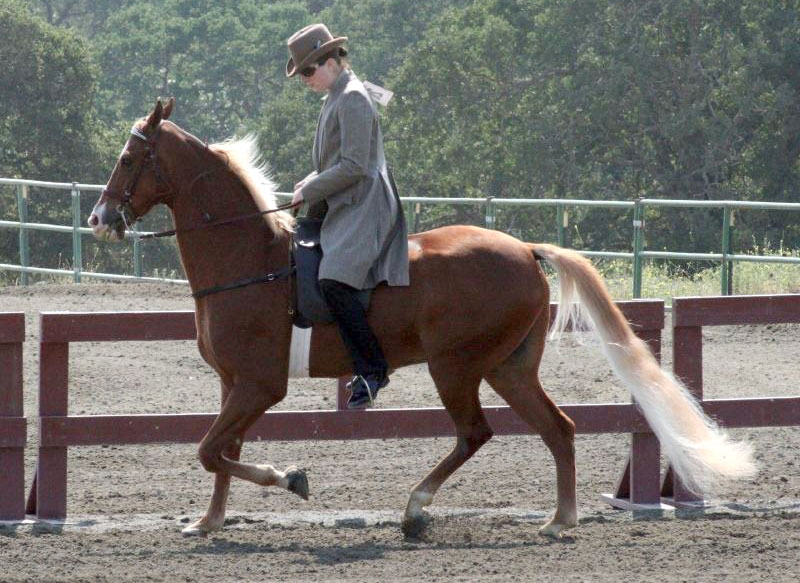
Summing up
The singular beauty and elegance of horses are best appreciated when they move. Understanding your horse’s gaits and the special gaits of other breeds is the foundation for all your skills as a rider.
In this article we wanted to show you the basics of the three natural gaits and some characteristics of other breeds.
For more information about horse biomechanics, remember that you can read our article on the Basics of Horse Locomotion.
Would you like to delve deeper into the world of horse training?
Download our free guide on Horse training step by step. There we tell you everything we have learned about horse training in more than 25 years of experience.
And if you want to be a professional horse trainer and get field-based training, you should check out our training program. You will have the opportunity to live in our equestrian centre and experience our full training process with young horses.
~
THIS COULD ALSO BE INTERESTING
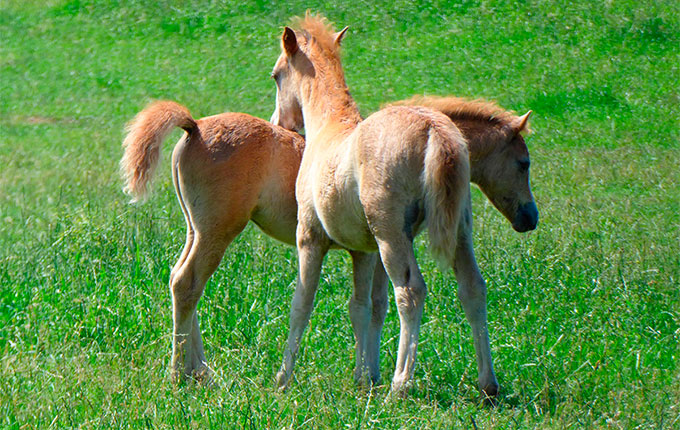
The benefits of play behavior in the development of foals
From their birth, foals tend to explore the world through play. This behavior is essential for good musculoskeletal development and herd integration.
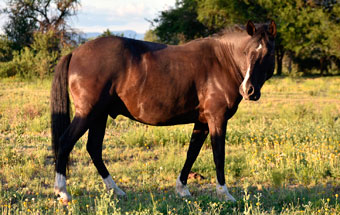
Peruvian Paso Horse I – Origin of the breed
We explain in detail why the breeders of Peruvian Paso Horses believe that we have an equestrian jewel in our hands.

Get on an Icelandic horse and discover Iceland
Discover the stunning landscapes of Iceland riding an Icelandic horse. Marvel at the Northern Lights, ride across trails and hills surrounded by volcanoes.
~
WHAT IS YOUR OPINION? LEAVE A COMMENT
Planning your horse riding holidays?
Join the Ampascachi Community. You will get exclusive advantages and guidance for your next horse riding holiday.


 German
German French
French Spanish
Spanish